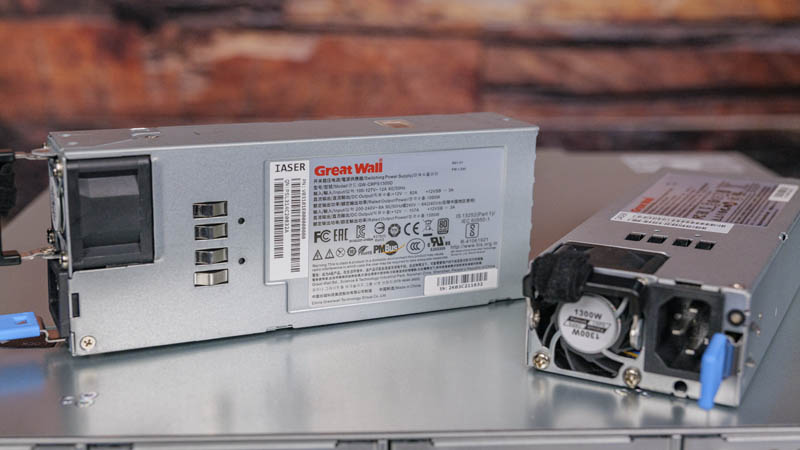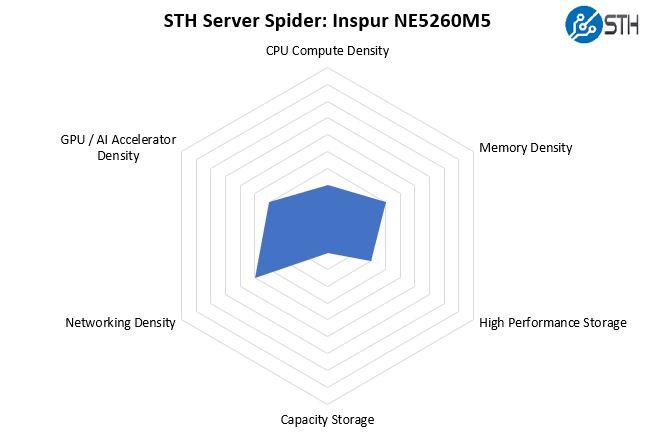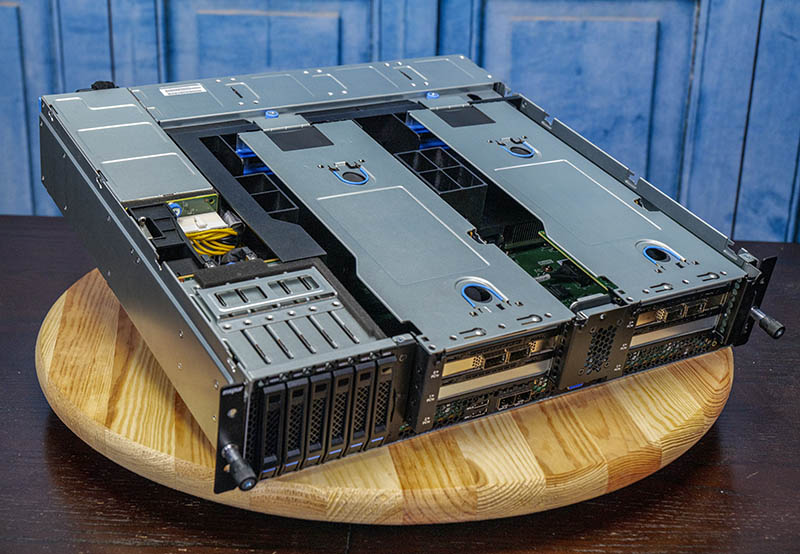Power Consumption
The redundant power supplies in the Inspur NE5260M5 test system are Great Wall 1.3kW 80Plus Platinum units. These offer a lot of power output both to handle high-end CPUs but also to power GPUs such as several NVIDIA T4 GPUs, FPGAs, and SmartNICs. This is a server designed to have a lot of add-in cards.

We tested the server in both our Fremont California 120V edge computing data center lab as well as our Sunnyvale California 208V data center lab, and the system performed well. we saw around 165W-180W at idle with our test configuration depending on the input voltage. At full power, we were only able to get to about half of what the power supplies could put out which makes sense since we only had two NICs installed, not a full set of high-end accelerators.

We also tested single PSU configurations and saw that the single PSU provided around 1-2% lower power consumption which makes sense given the better efficiencies when removing redundancy.
STH Server Spider: Inspur NE5260M5
In the second half of 2018, we introduced the STH Server Spider as a quick reference to where a server system’s aptitude lies. Our goal is to start giving a quick visual depiction of the types of parameters that a server is targeted at.

These systems are not necessarily designed to bring the same density as an Inspur i24 for computing, or an Inspur NF5488M5 for GPU acceleration. At the same time, they provide a lot of deployment flexibility and configuration capabilities in a familiar package that is designed for the edge.
Final Words
The Inspur Systems NE5260M5 surprised us on many fronts. The attention to detail in serviceability was great. The server felt more like a cloud provider server to service than a typical embedded platform. This was also one of our first Inspur servers assembled in the USA. Hopefully, we get to show our readers that facility soon.

The front I/O of the system is not well suited to many traditional data centers, however, at the edge whether those are service provider racks, racks in retail locations, or elsewhere, this system has a great form factor. In many of those locations, rack depths are minimal which makes the short-depth servers a requirement. Likewise, front I/O means that all cabling, except the power inputs, in on the front of the system. One can easily service the server from the cold aisle.
In terms of market segments, the edge server market is certainly one of the areas that are seeing a lot of focus and innovation at this time. While the Inspur Systems NE5260M5 is designed for short-depth 19″ racks, other vendors are innovating in even smaller edge server platforms. This 2U form factor is quickly becoming a standard that the industry is adopting at the edge as it packs a lot of functionality into a greatly reduced space.

Even with a recent push into this market, perhaps the most surprising part about the NE5260M5 was the relatively high level of polish on the server’s fit, finish, and features. This is an emerging area with a lot of focus, but the NE5260M5 felt like a mainstream Tier 1 OEM server. Perhaps that is to be expected from the third-largest server vendor, but it is a stark comparison to Inspur’s competition that either does not have a server in this space or rushed a solution to market. While this is a server designed for a more specific use-case, it is well suited to the edge computing market.




We’re looking to deploy this form factor in 2021. It’s great that STH is reviewing this class of system.
Hello, I’m the EE of this SEVER, It also have several SKUs to support 6 Bays of 2.5” NVMe SSDs, or 4 Bays NVMe + 2 Bays SATA , or 2 Bays NVMe + 4 SATA, just let readers to know , thanks!